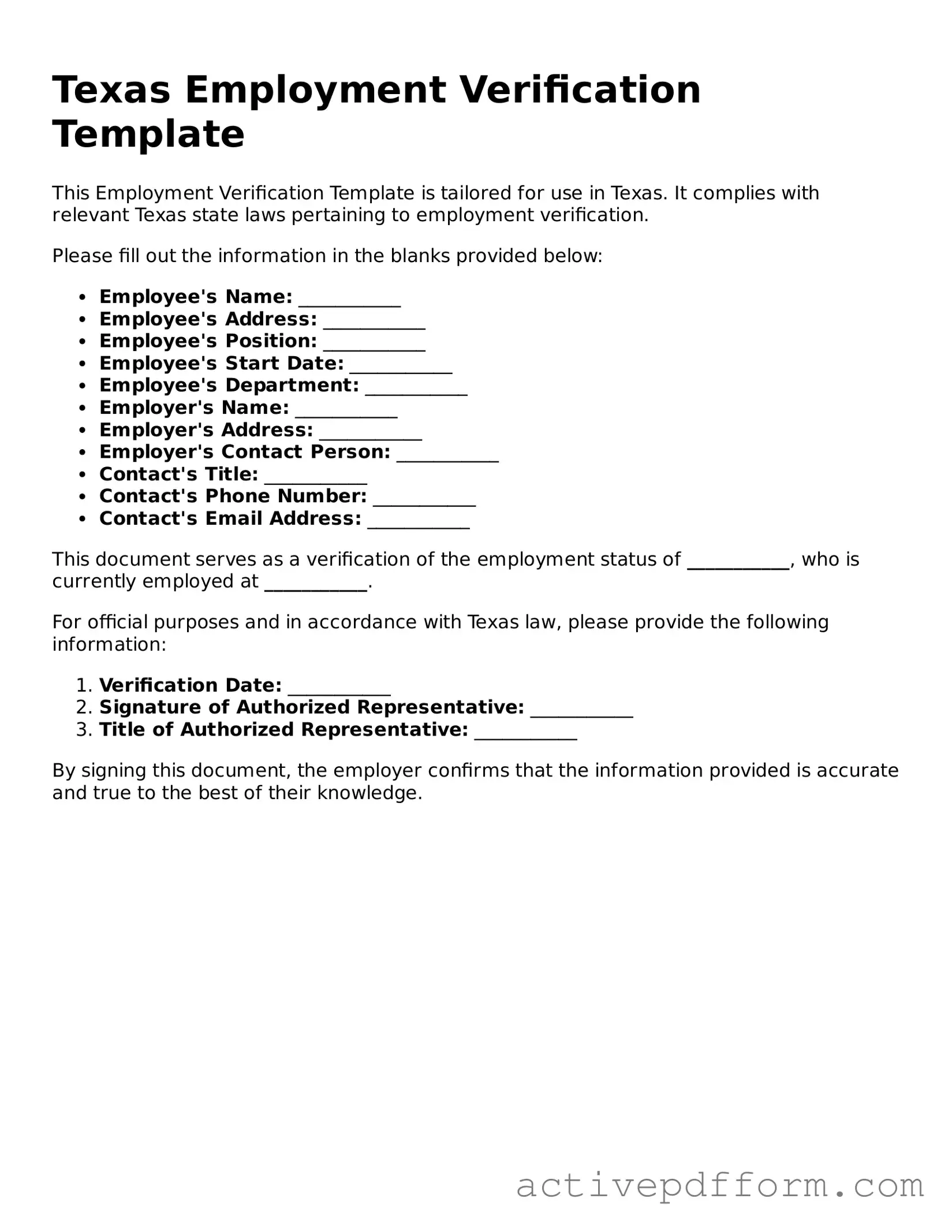What is the Texas Employment Verification form?
The Texas Employment Verification form is a document used to confirm an individual's employment status, job title, and other relevant employment details. This form is often required by various entities, including lenders, government agencies, and potential employers, to verify a person's work history and income. It serves as an official record that can help facilitate processes such as loan applications or background checks.
Who needs to fill out the Texas Employment Verification form?
Typically, the form is completed by employers or human resources representatives. However, employees may request that their employer fill it out to assist with personal matters, such as applying for a mortgage or renting an apartment. In essence, anyone who needs to verify an employee's work details can initiate the process.
What information is required on the form?
The Texas Employment Verification form usually requires specific details, including the employee's name, job title, dates of employment, salary or hourly wage, and the employer's contact information. Additionally, employers may need to provide a signature and date to validate the information presented. This ensures that the verification is both accurate and official.
How does an employee request the form?
An employee can request the Texas Employment Verification form by reaching out to their human resources department or direct supervisor. It's helpful to provide context for the request, such as explaining the purpose of the verification. Most employers are accustomed to these requests and should be willing to assist in providing the necessary information.
Is there a fee associated with obtaining the verification?
Generally, there is no fee for obtaining an employment verification form from your employer. However, if a third-party service is used to verify employment, there may be fees involved. It's always best to clarify with the employer or the verifying agency about any potential costs before proceeding.
How long does it take to receive the completed form?
The time it takes to receive a completed Texas Employment Verification form can vary. In many cases, employers can provide the information within a few days. However, if the request is made during a busy period or if additional verification is needed, it may take longer. It's advisable to plan ahead and allow sufficient time for processing.
What should I do if my employer refuses to complete the form?
If an employer refuses to complete the Texas Employment Verification form, it's important to understand their reasons. Sometimes, company policy may restrict the release of certain information. In such cases, consider discussing the issue with a supervisor or HR representative to seek a resolution. If all else fails, exploring alternative methods for verification, such as pay stubs or tax documents, may also be beneficial.
